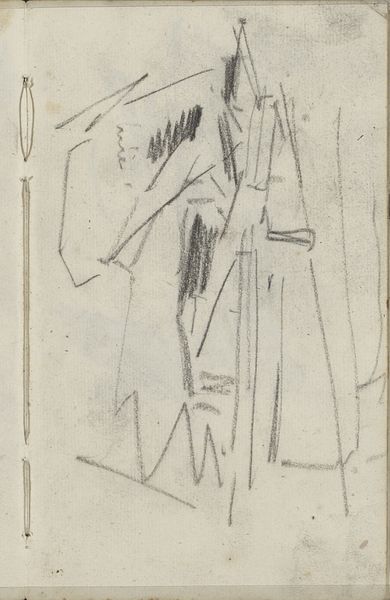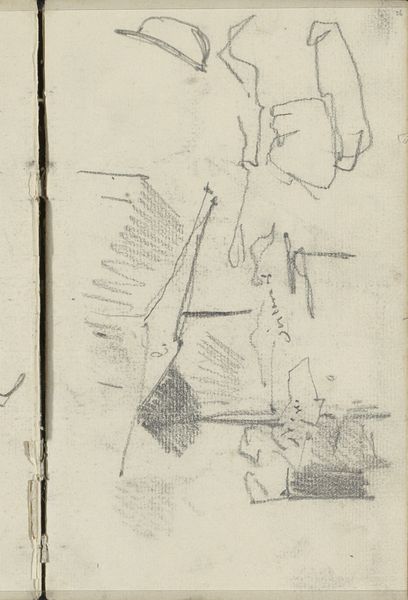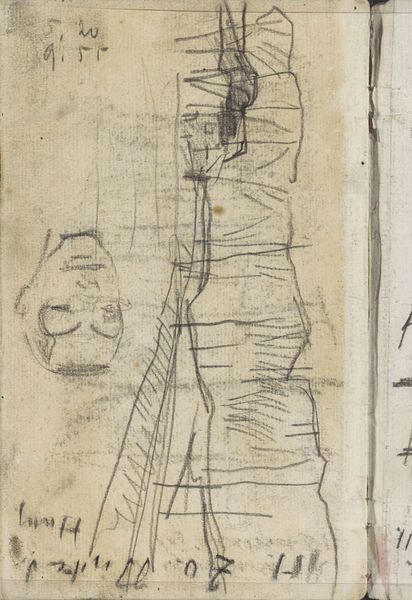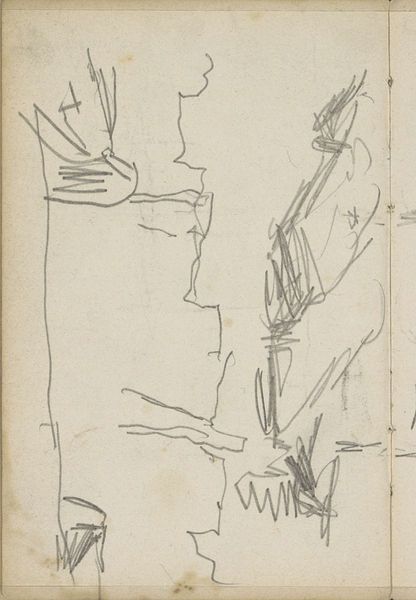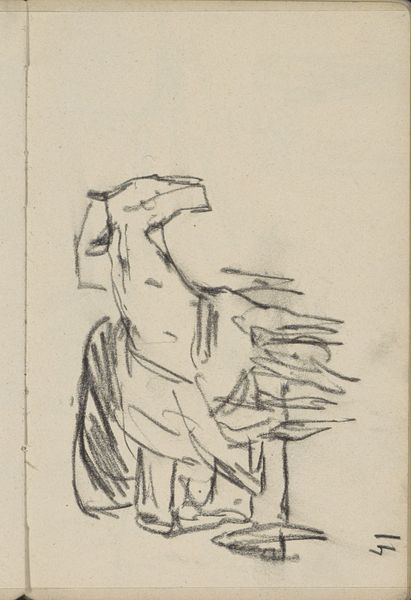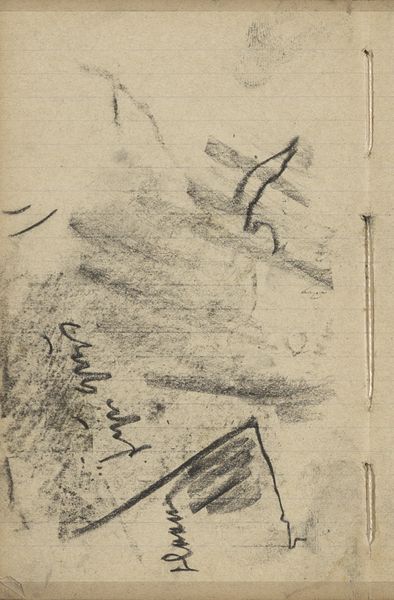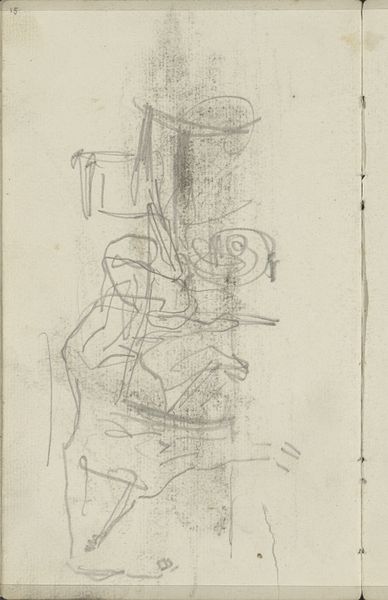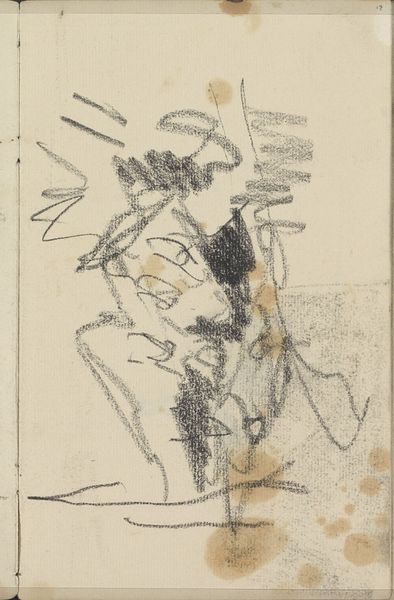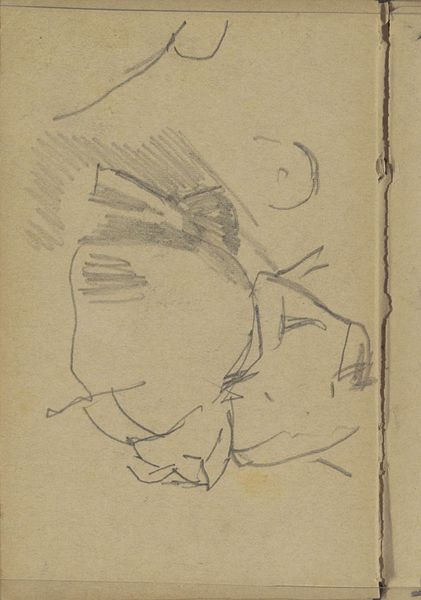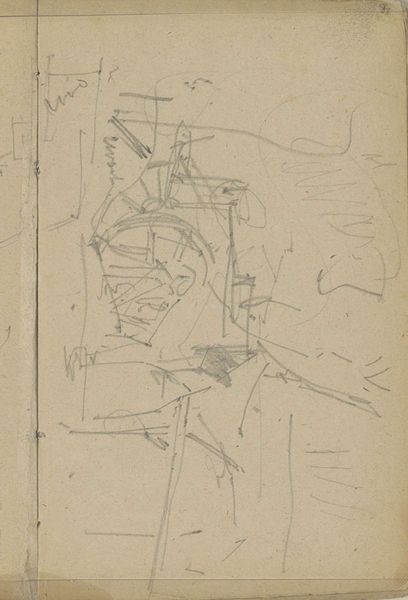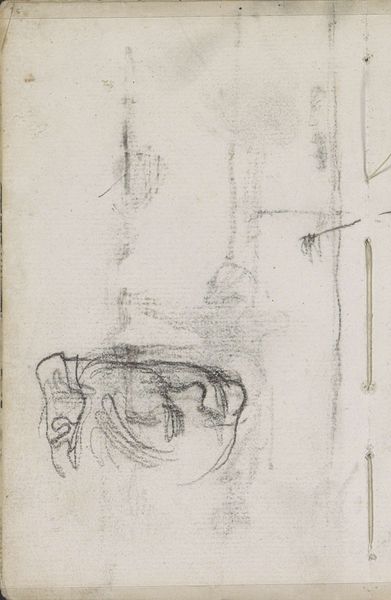
Studie, mogelijk van een landschap met figuren c. 1883 - 1885
0:00
0:00
georgehendrikbreitner
Rijksmuseum
drawing, charcoal
#
portrait
#
drawing
#
impressionism
#
charcoal
Copyright: Rijks Museum: Open Domain
Editor: So, this is George Hendrik Breitner's "Studie, mogelijk van een landschap met figuren," created around 1883-1885. It's a charcoal drawing. What strikes me is how ephemeral it feels, like a fleeting impression. What do you see in this piece, particularly from a historical perspective? Curator: It's a fascinating piece, indeed. Breitner was deeply embedded in portraying the rapidly changing urban landscape of Amsterdam, capturing everyday life. The Rijksmuseum itself plays a vital role, as one of the first public museums in the Netherlands, in creating an historical understanding of this transformative period. Don’t you find this sketch echoes that same drive to portray contemporary life? Editor: Absolutely, the loose charcoal lines remind me of snapshots capturing the bustling city! The way he uses line and shadow – it’s all so immediate and raw. How does this connect to broader socio-political themes? Curator: Well, consider the context. Breitner lived in a time of increasing industrialization and urbanization. He moved away from the grand history painting. How do you think art institutions and galleries influence these social and political changes? Editor: It makes you think about how artists depict a sense of contemporary life at the time while still being timeless through the artist's specific style of depicting things. This conversation also helped highlight the artist and the museum's position in history to properly analyze what an artwork means. Curator: Precisely! These institutions and artworks mutually reinforce each other. A simple drawing becomes a rich, invaluable source of historical evidence, shedding light on societal transitions and evolving modes of representation.
Comments
No comments
Be the first to comment and join the conversation on the ultimate creative platform.
